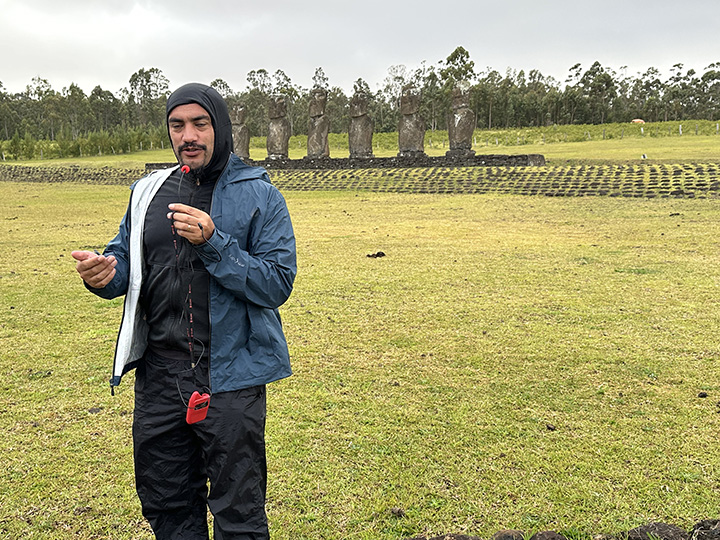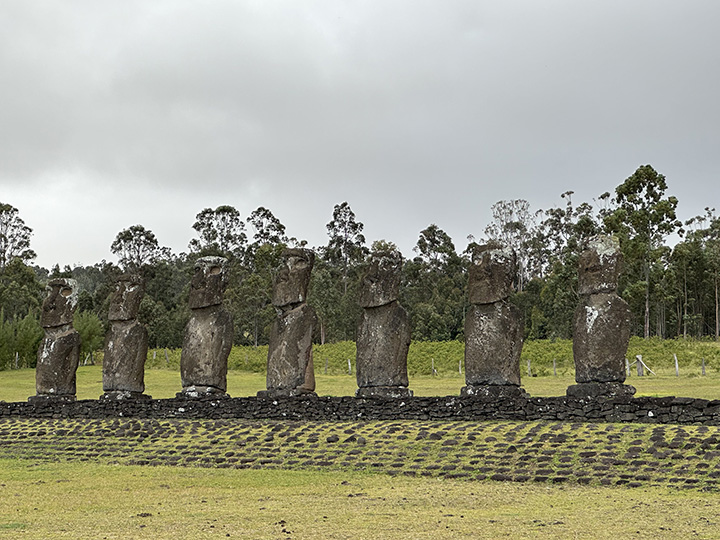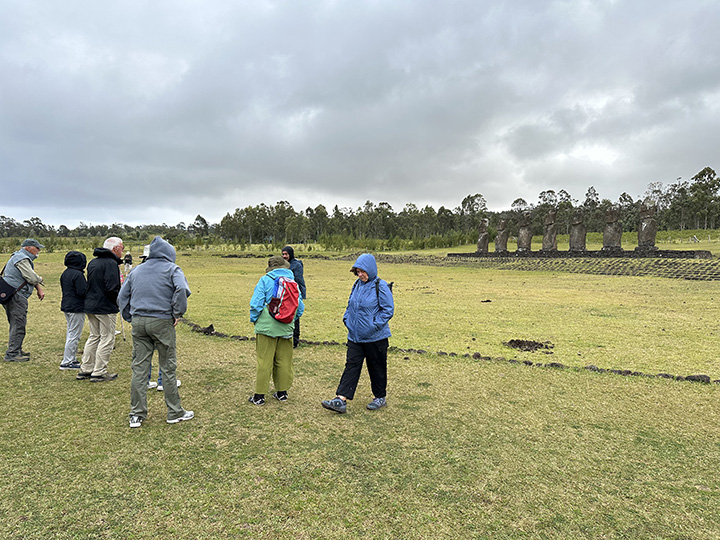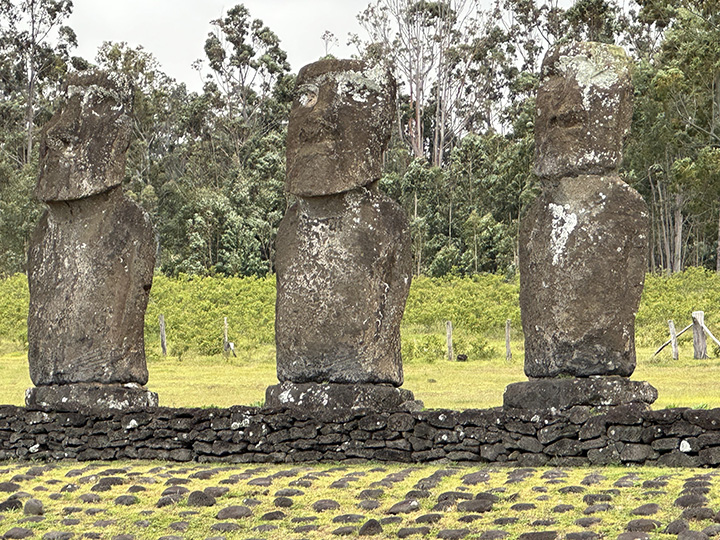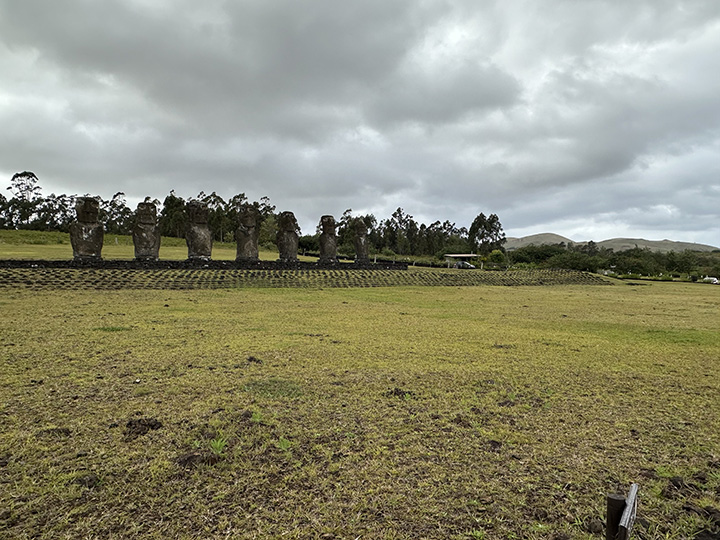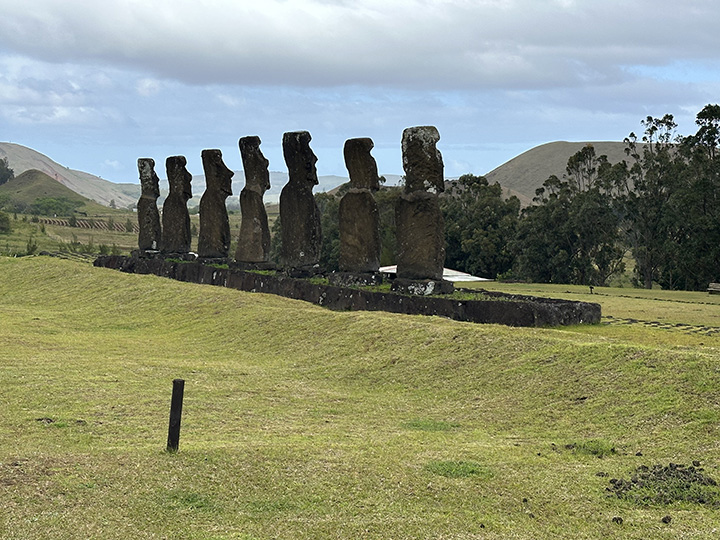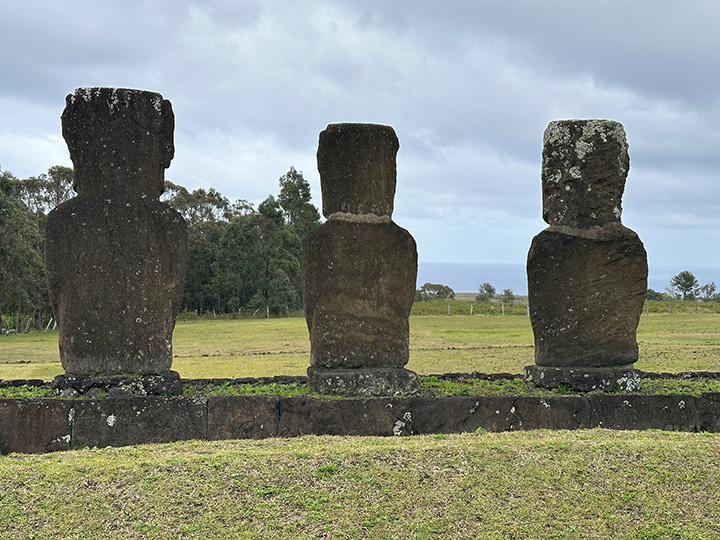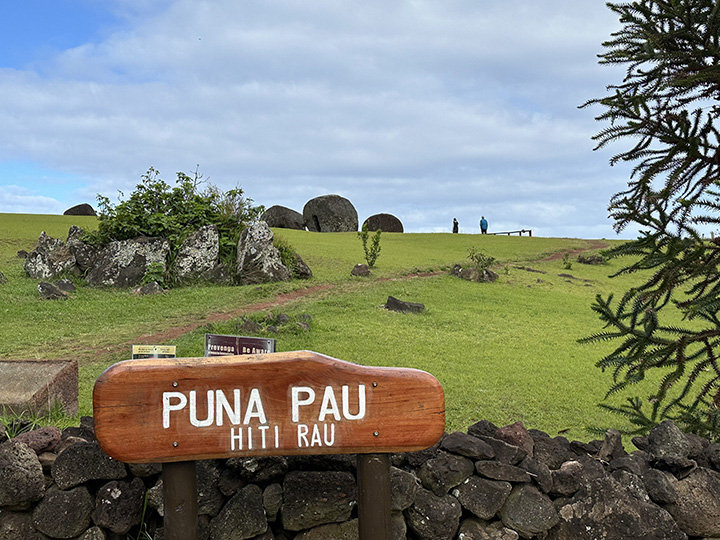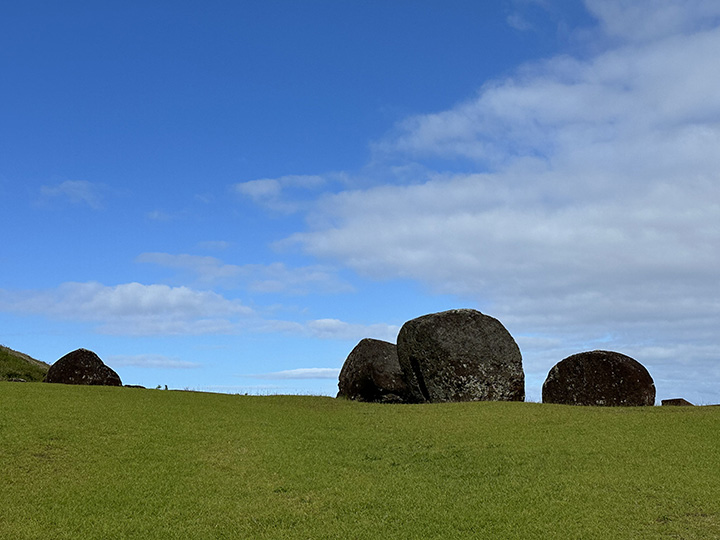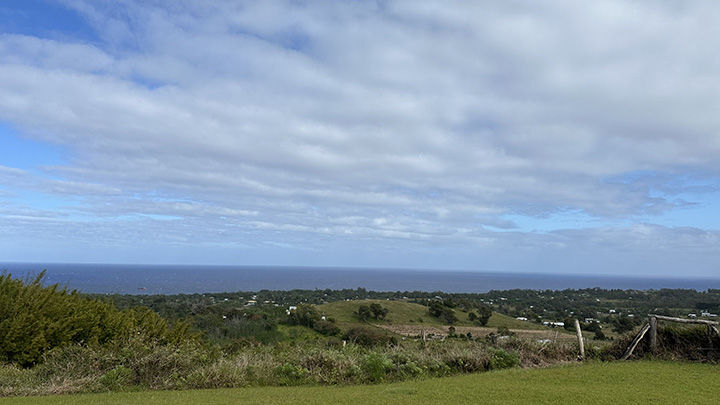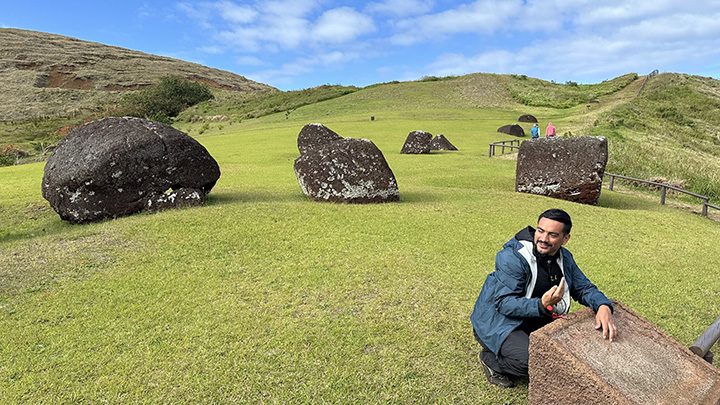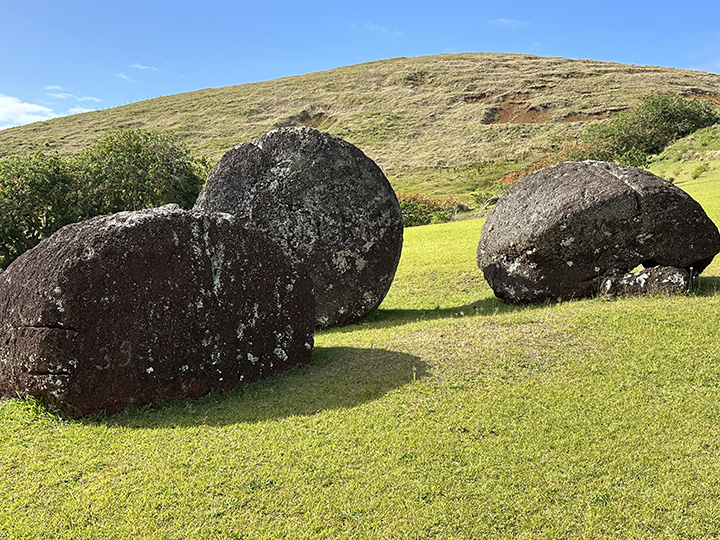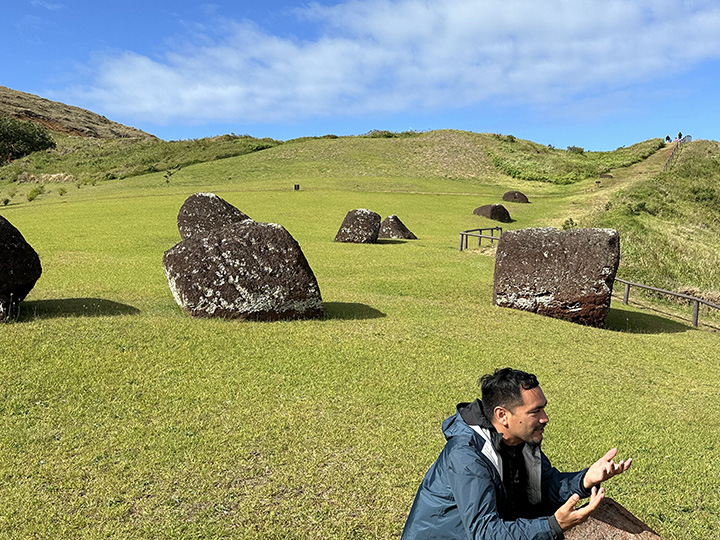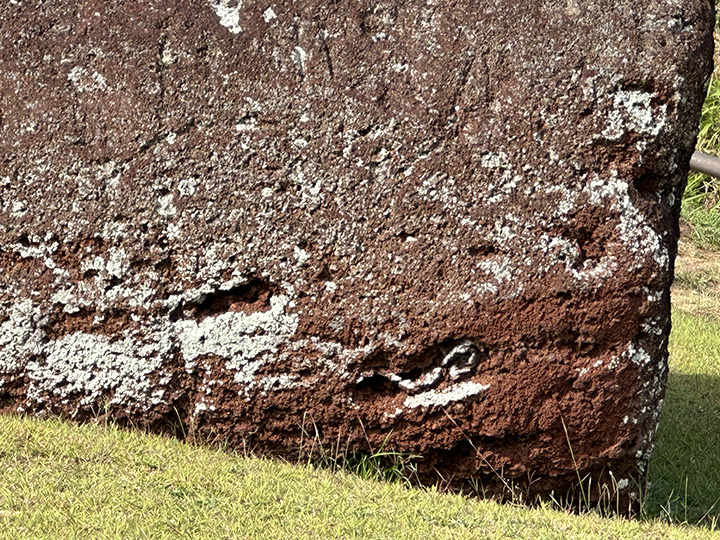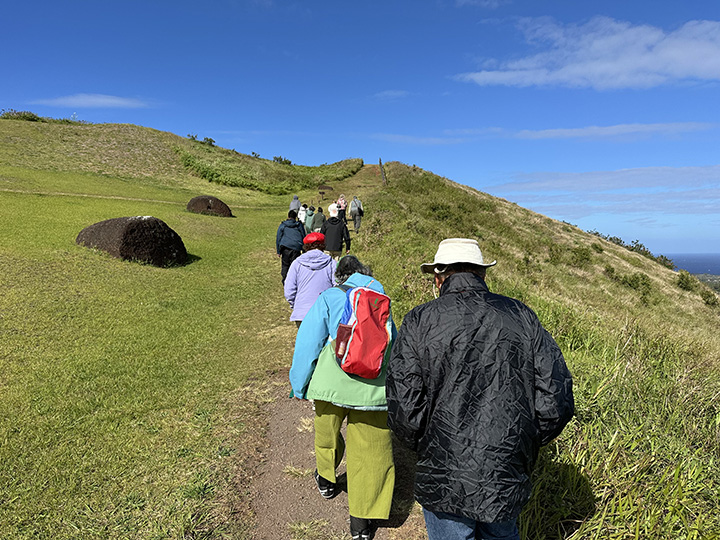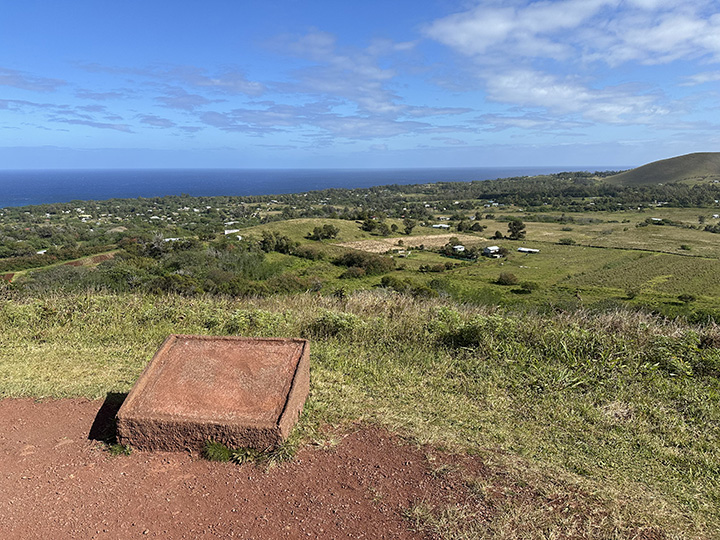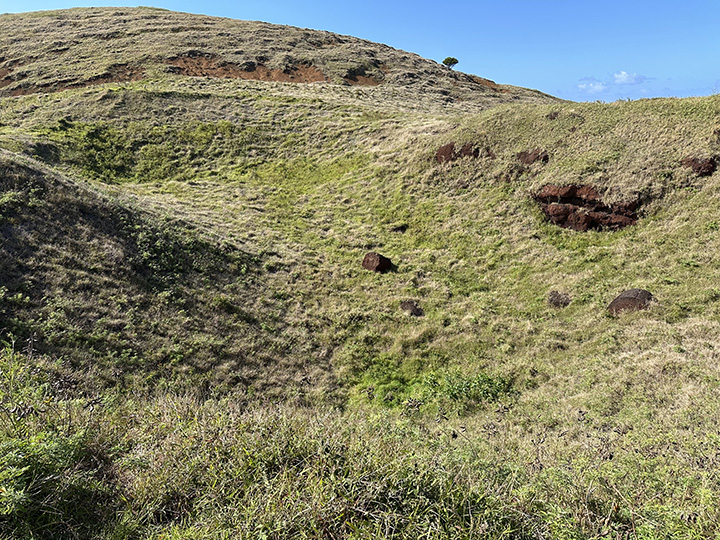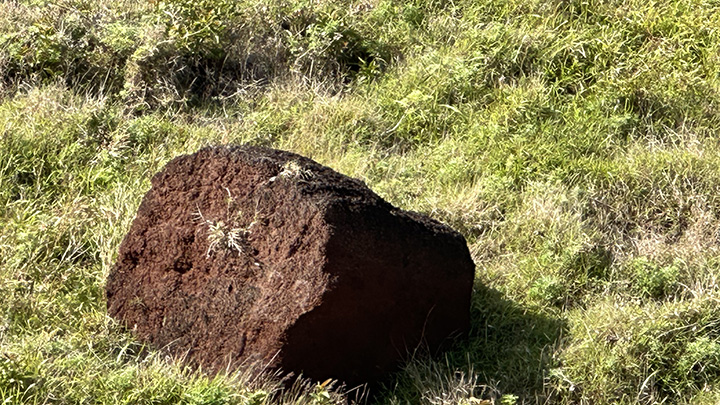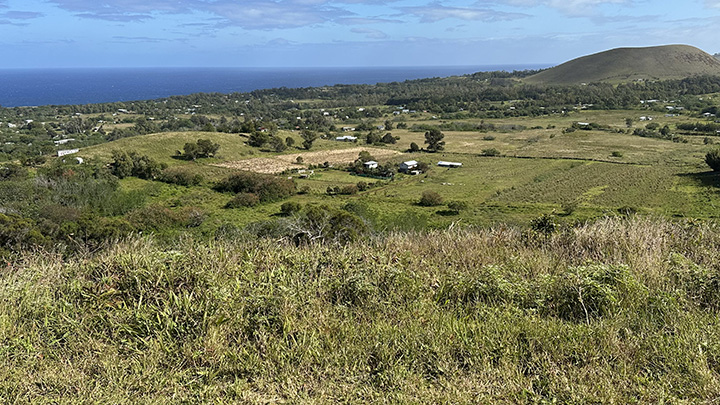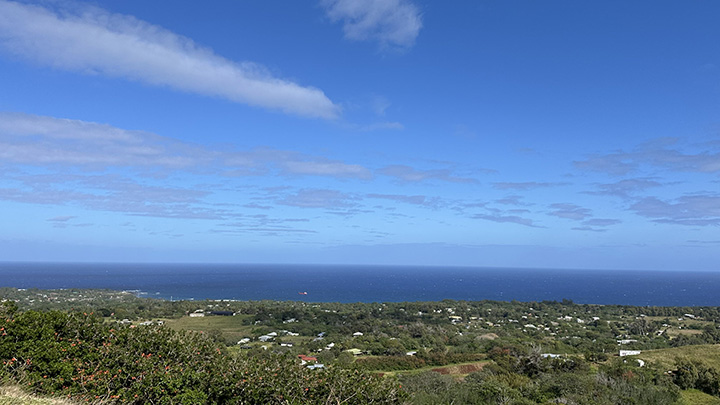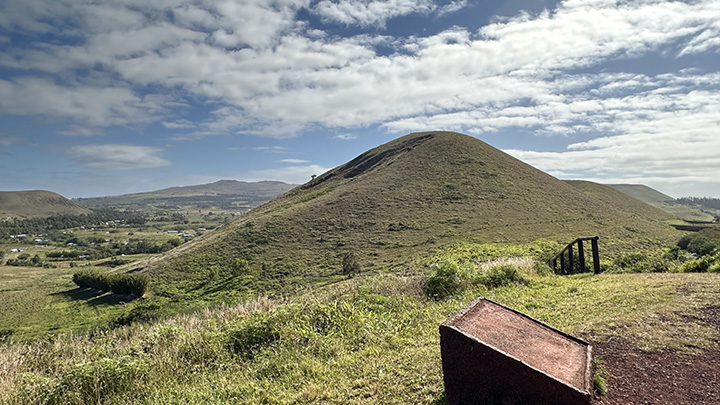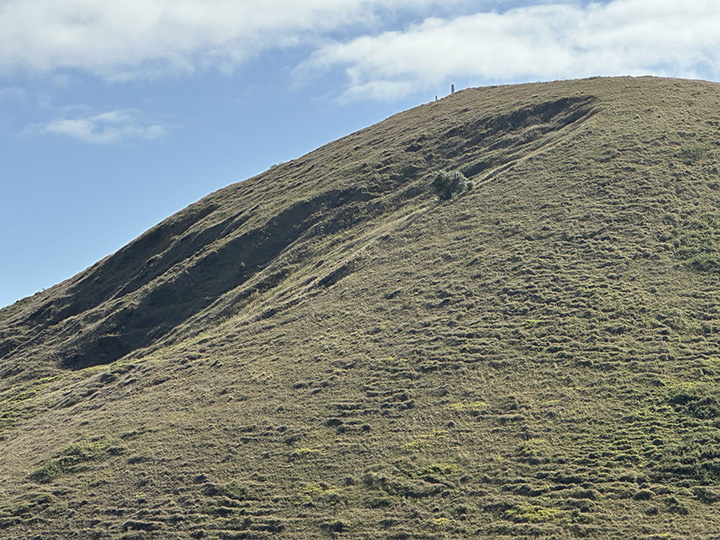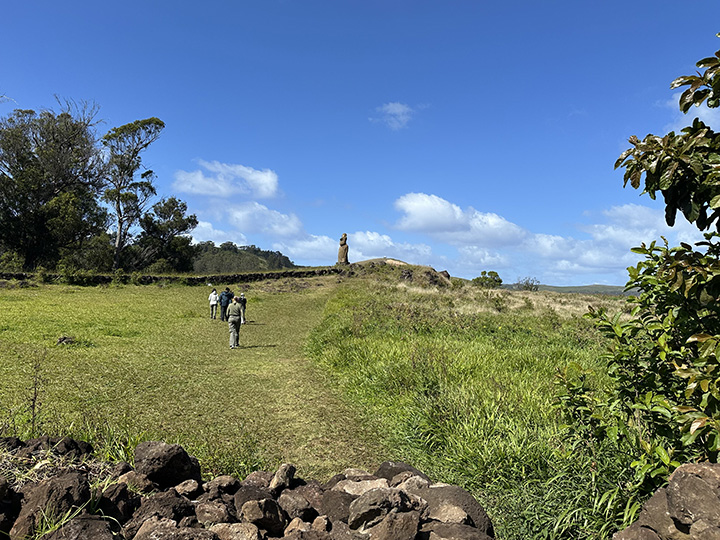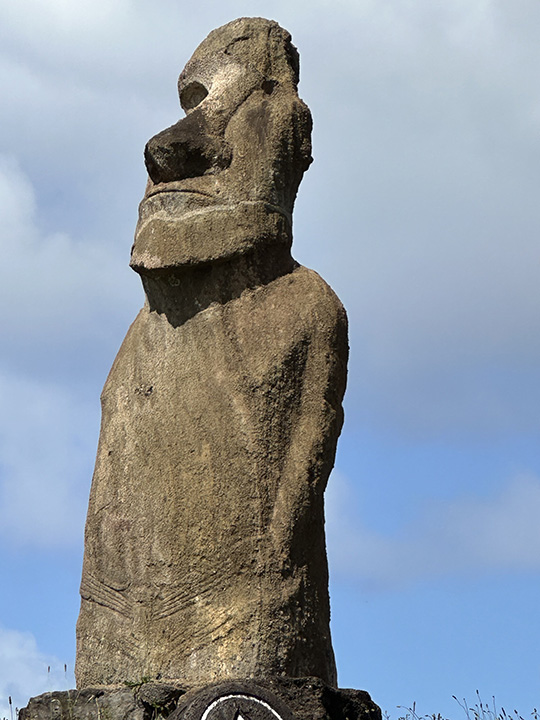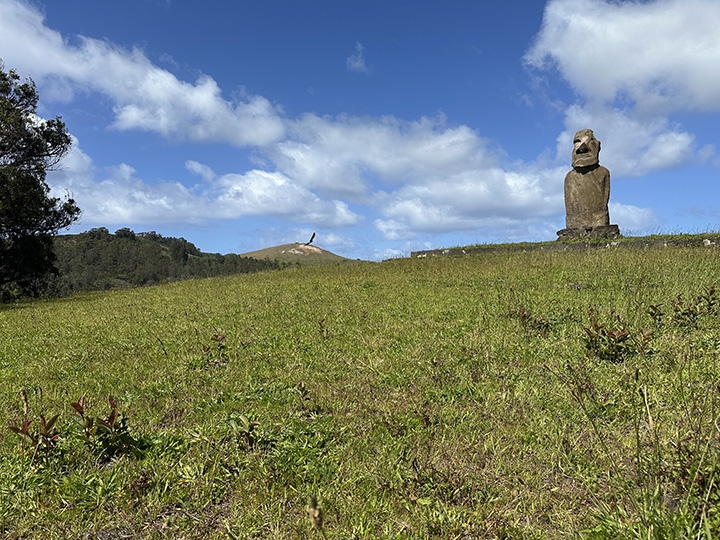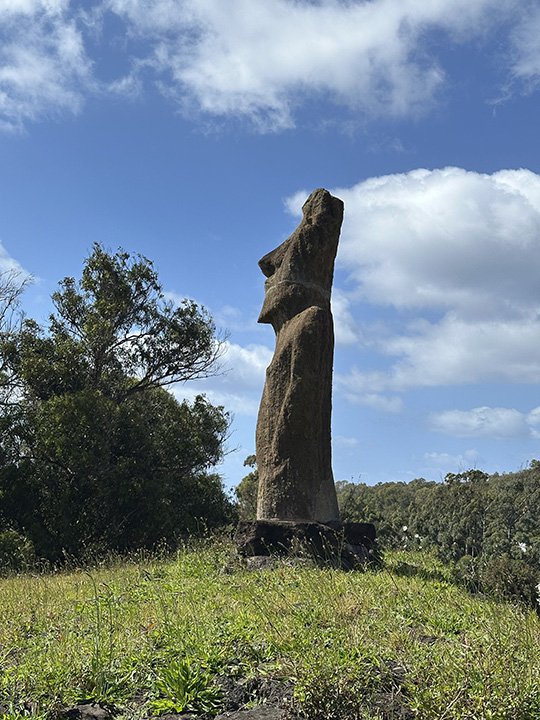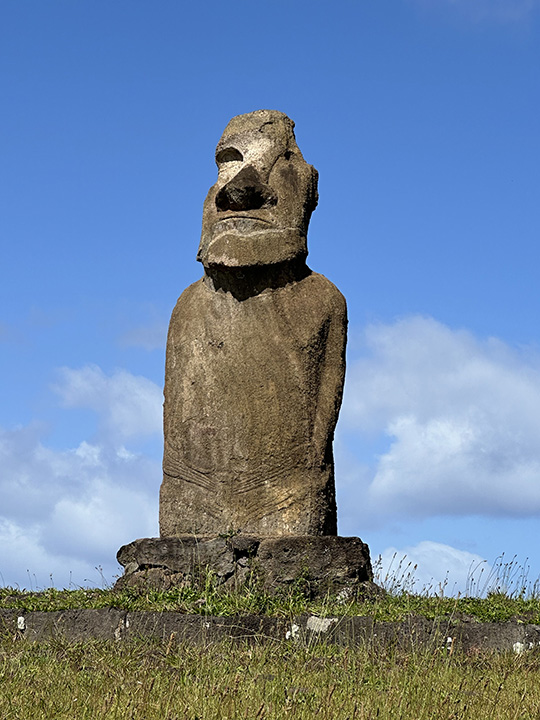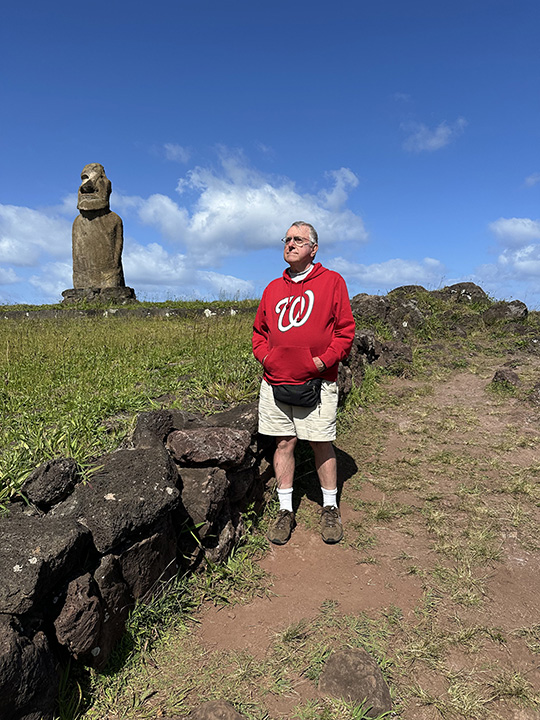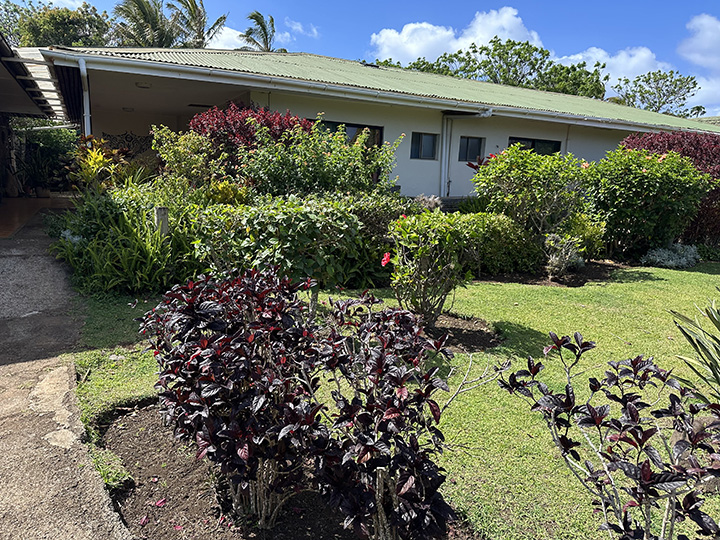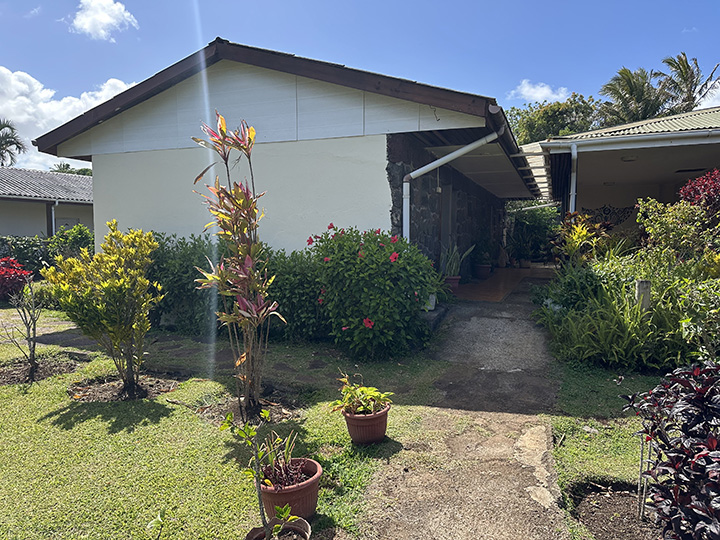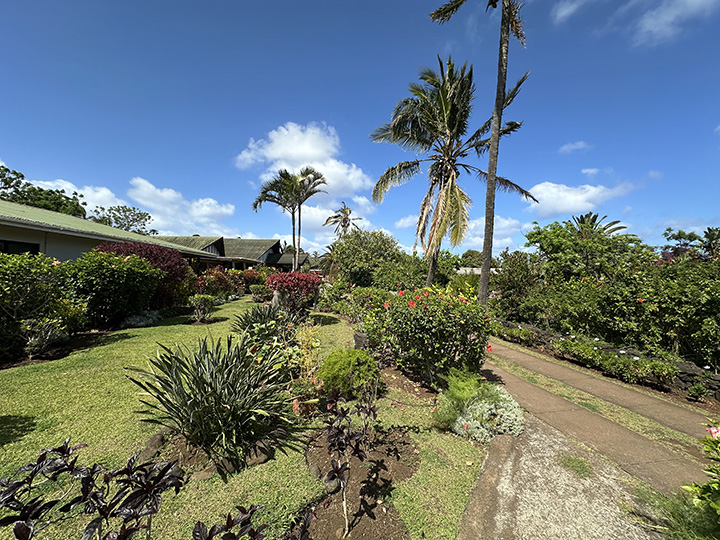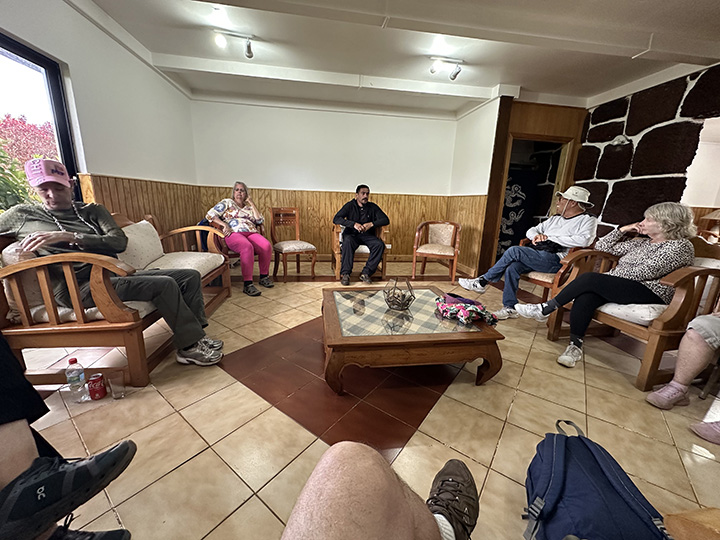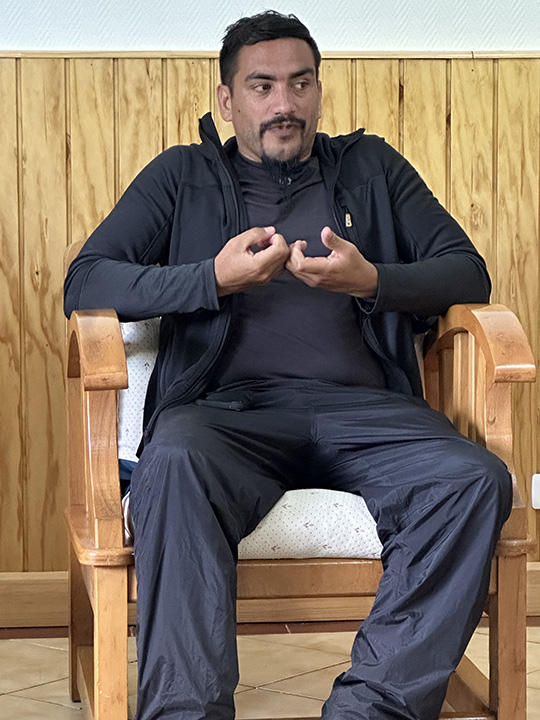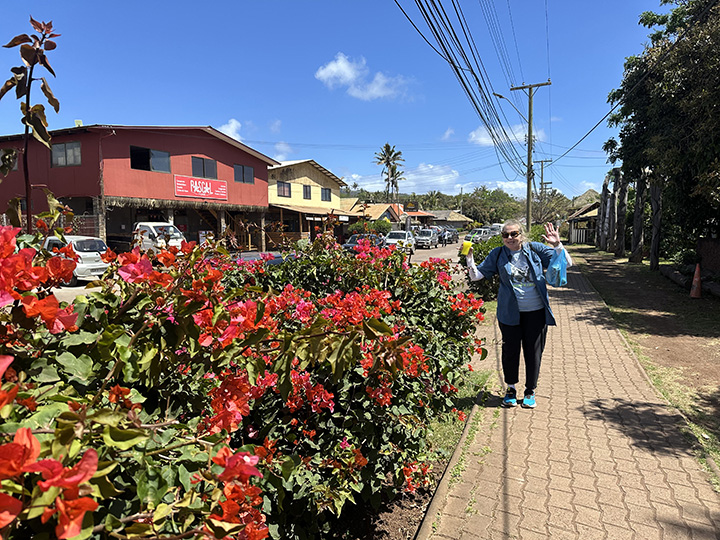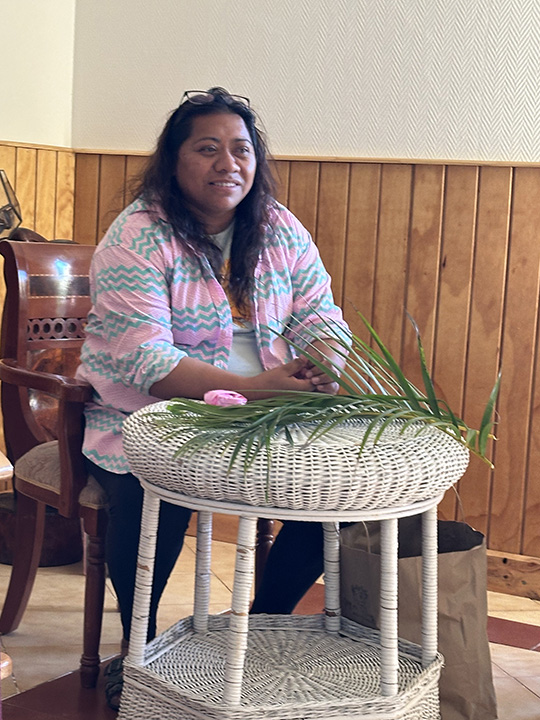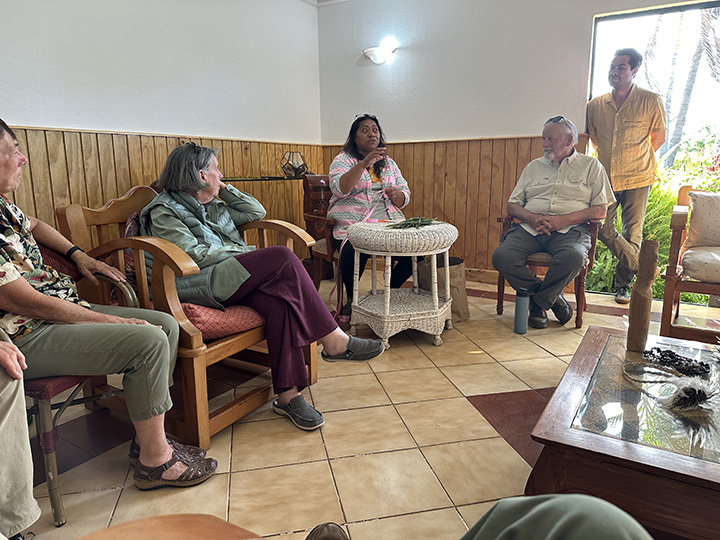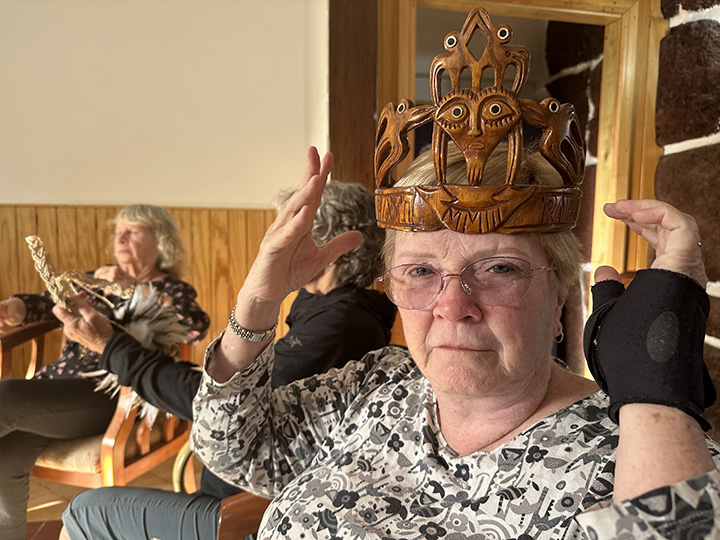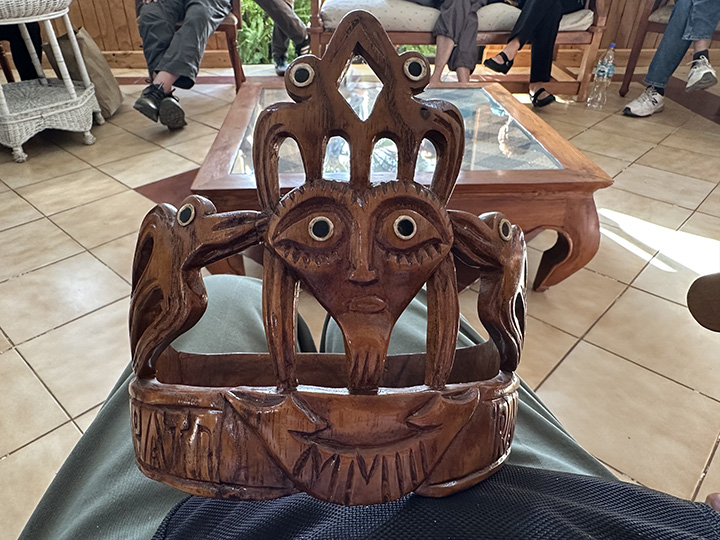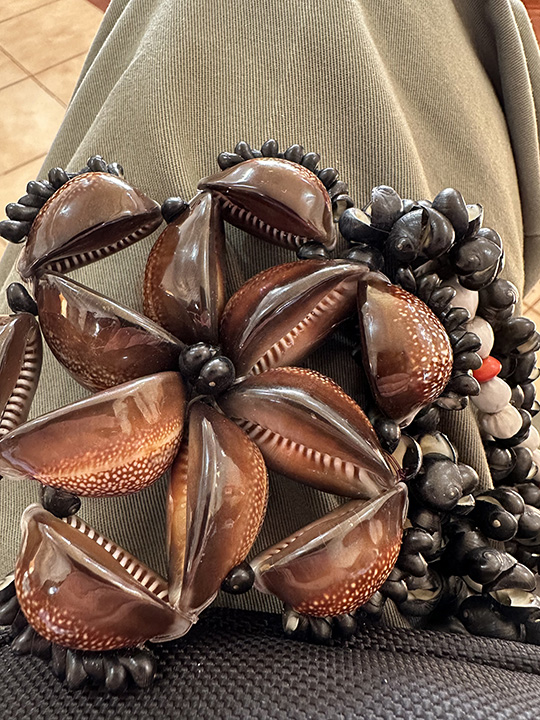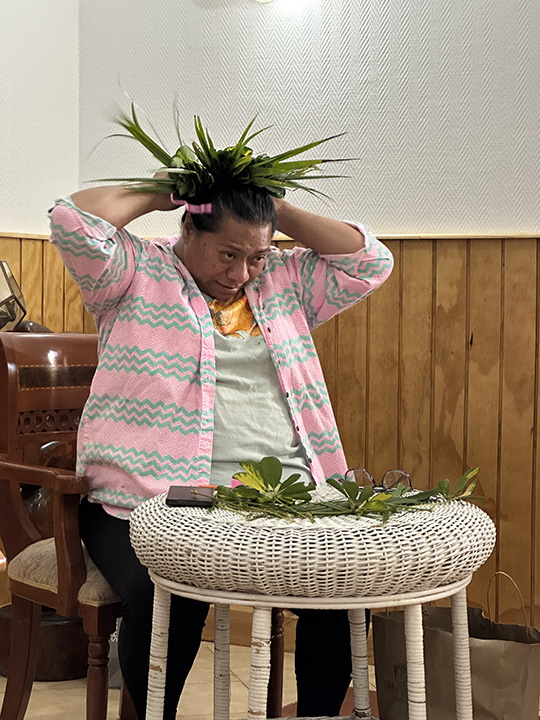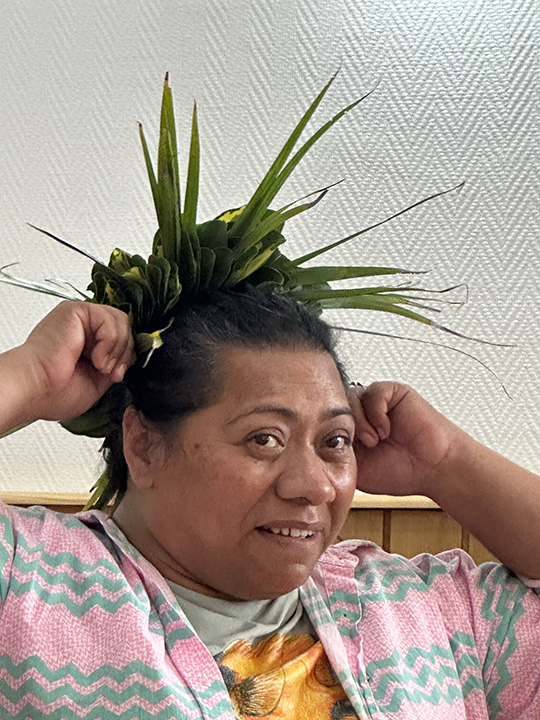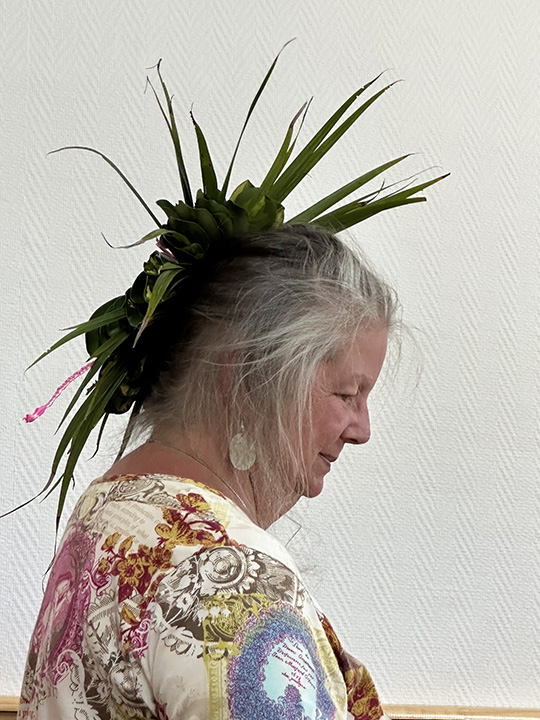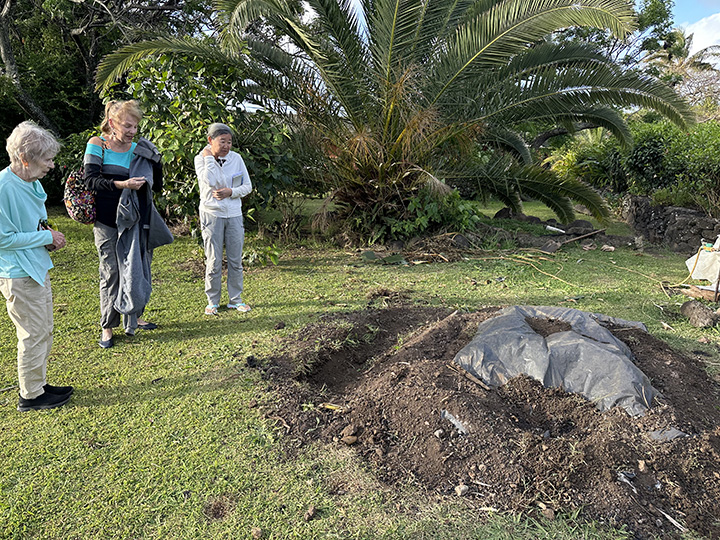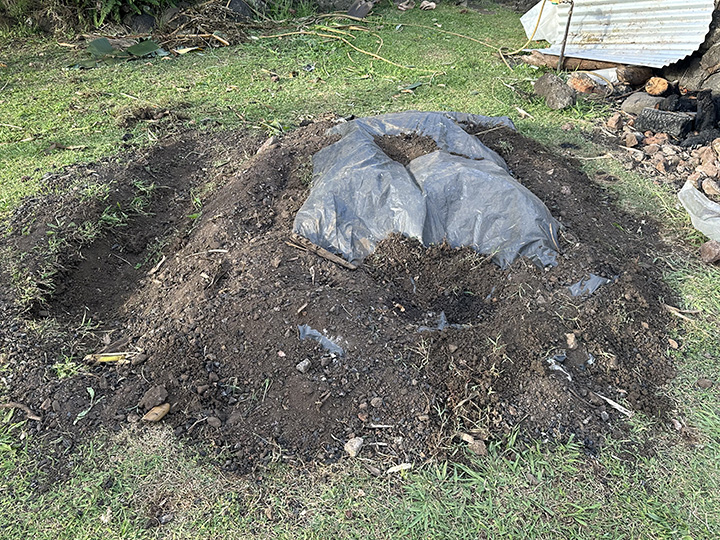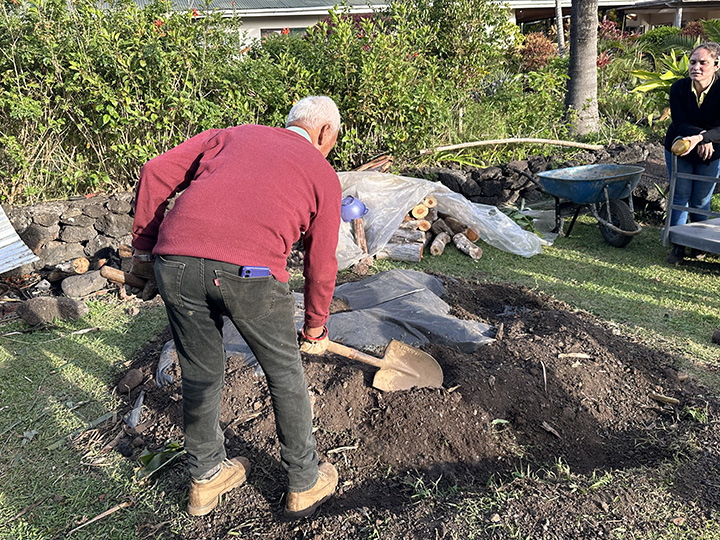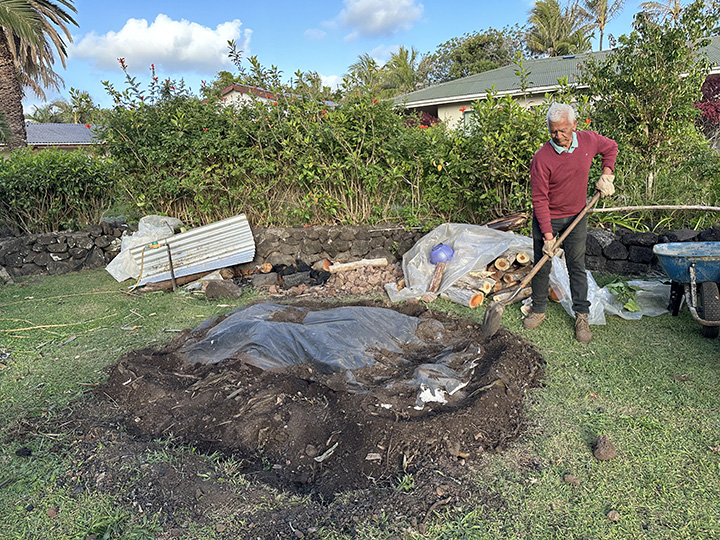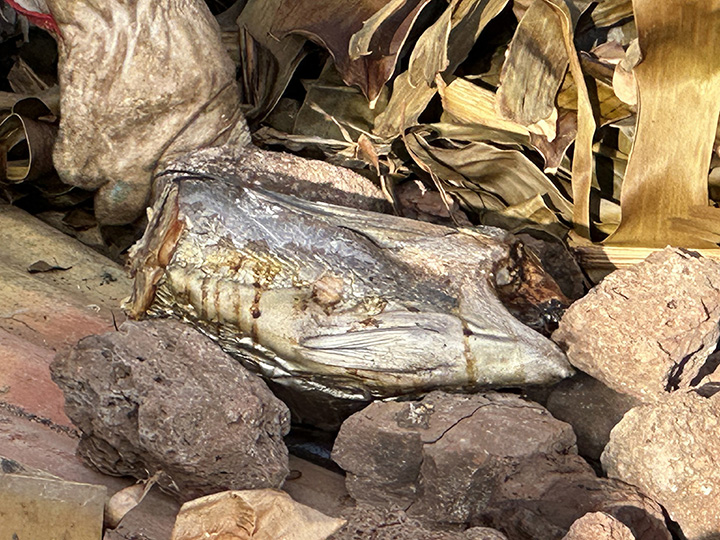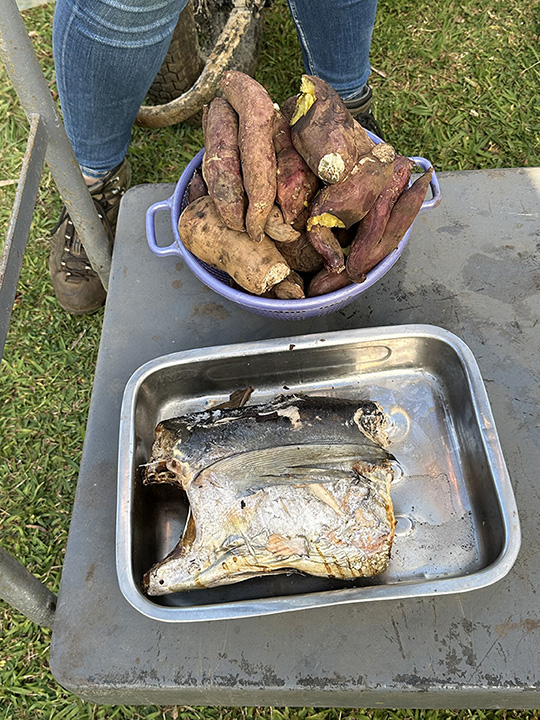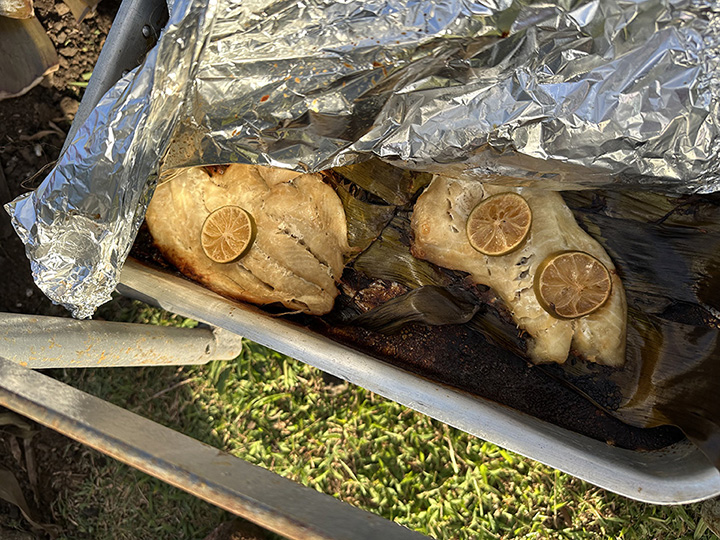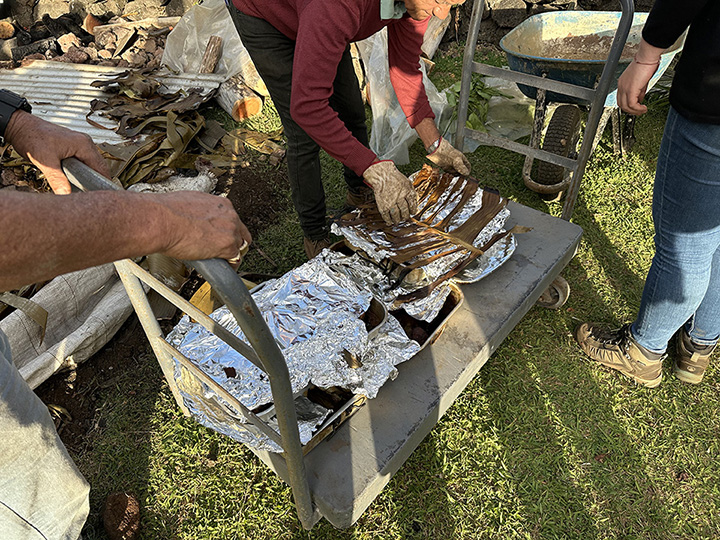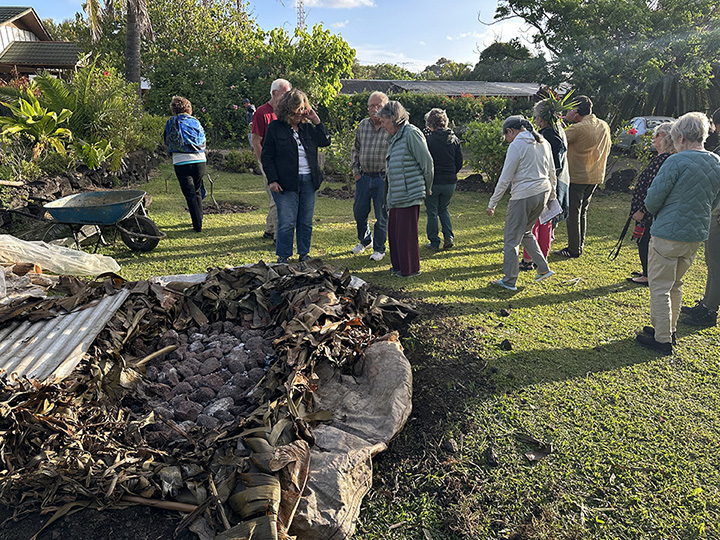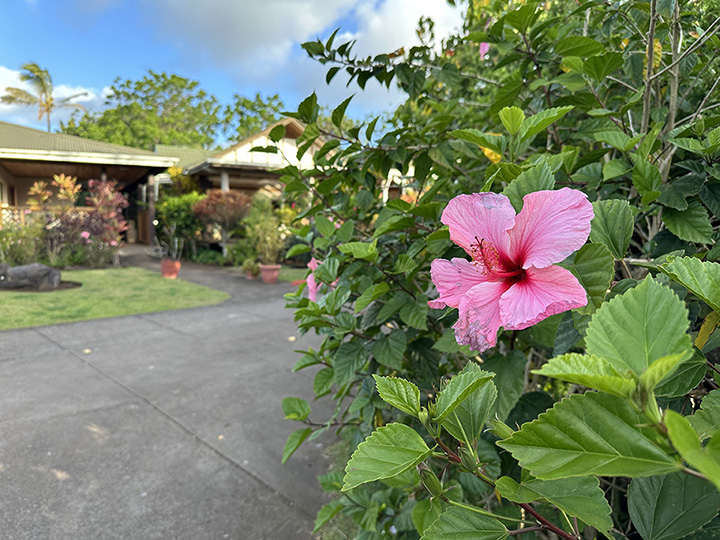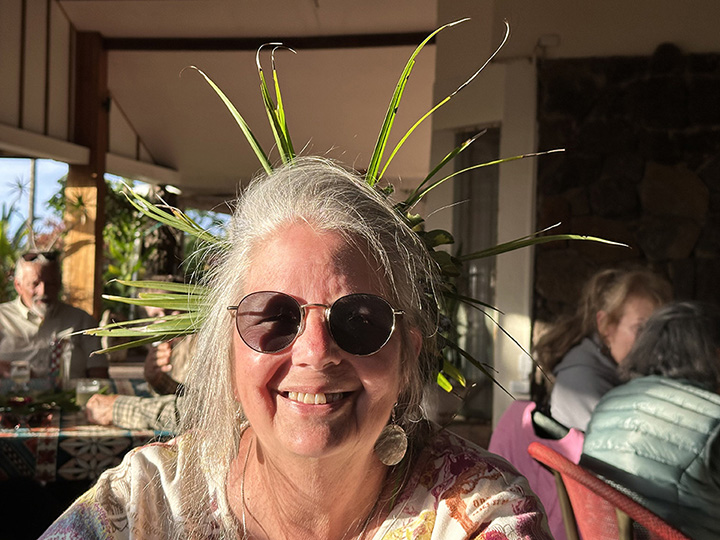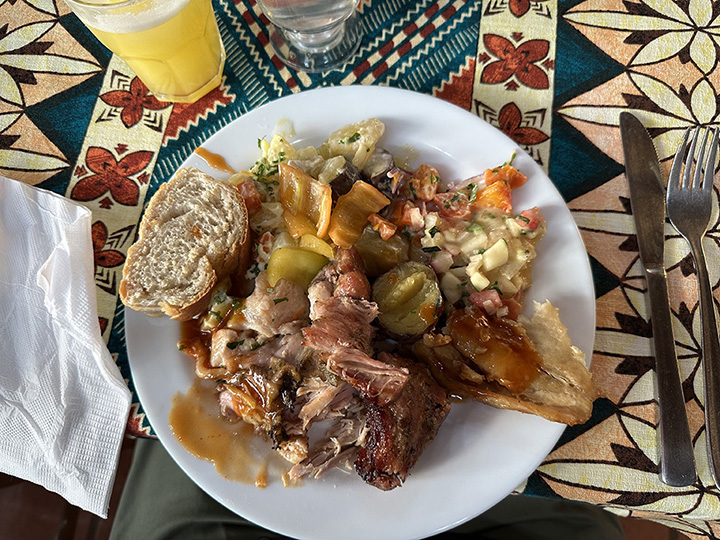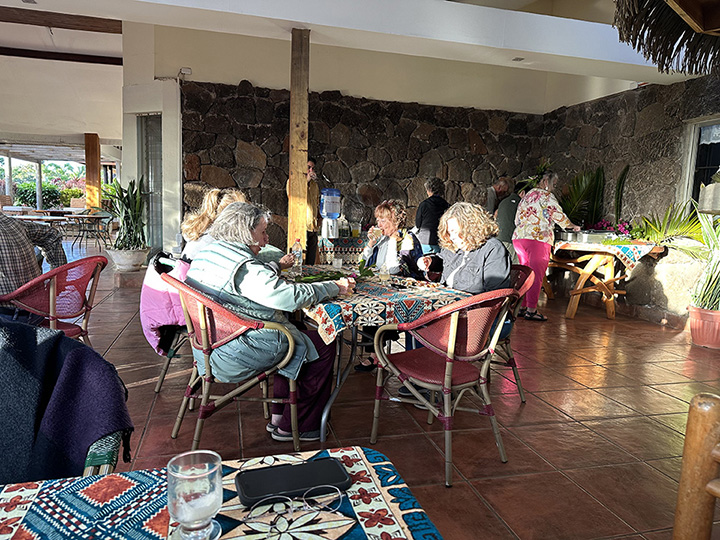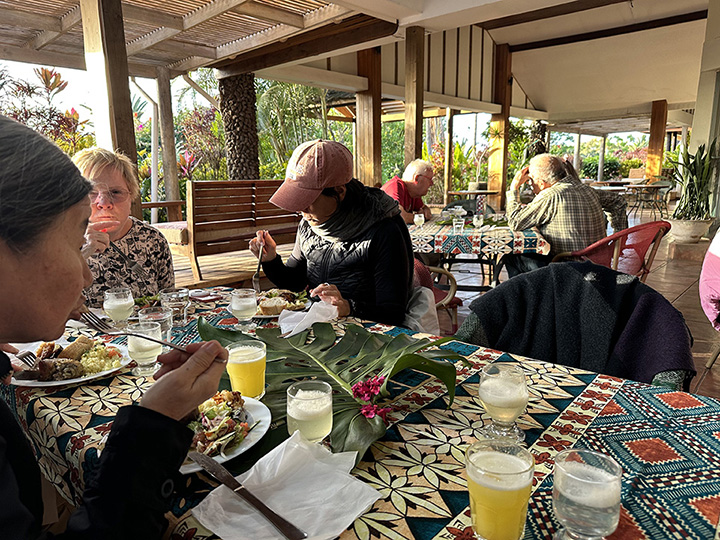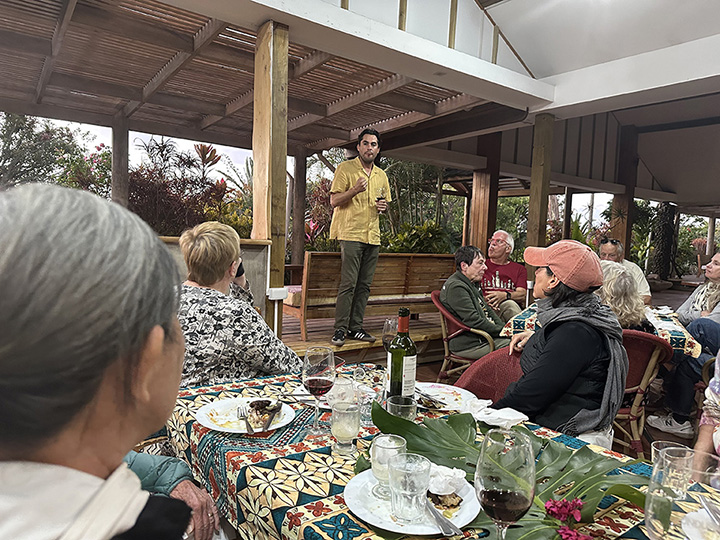|
This was our final day of sightseeing on Easter Island. We saw our last moai, did a little souvenir shopping, and enjoyed a dinner cooked like a traditional Easter island feast.
The day started cold with a little drizzle, but that didn’t slow down the Road Scholars even a little bit. Cristian is explaining, or attempting to explain, why those seven moai here at Ahu Akivi are facing toward the ocean instead of away from it as most of the others do. The bottom line was that there are many theories, but nobody knows for sure. However, Wikipedia says this: Ahu Akivi is a particularly sacred place on Rapa Nui, looking out towards the Pacific Ocean. The site has seven moai, all of equal shape and size, and is also known as a celestial observatory that was set up around the 16th century. The site is located inland, rather than along the coast. Moai statues were considered by the early people of Rapa Nui as their ancestors or Tupuna that were believed to be the reincarnation of important kings or leaders of their clans. The Moais were erected to protect and bring prosperity to their clan and village. A particular feature of the seven identical moai statues is that they exactly face sunset during the Spring Equinox and have their backs to the sunrise during the Autumn Equinox. Such an astronomically precise feature is seen only at this location on the island.
Cristian said there is an ancient legend that an island was sinking — he said lots of Polynesian legends begin with the threat of an island about to sink — so the chief sent seven spirits, some believe represented by those seven moai, to find a suitable land to which everybody could move. The place had to have freshwater and good land to grow crops and good climate and generally just be a good place to relocate. The spirits dismissed a rocky island here, and another rocky island there, and just when they were about to give up they came upon Rapa Nui. They returned to the chief who had sent them and reported they had found this halfway decent place that would probably work, maybe, they guessed, but the chief was getting desperate and that’s how the first settlers arrived on the island. Cristian says the Rapanui people don’t have huge pride in their homeland, and in fact I have learned over the past week that apart from the wonderful inhabitants, it is a nice enough place but not among the most hospitable Polynesian islands.
So those are the seven spirits who found the island. Maybe. Maybe not. Who knows?
The lichen like'em.
Must be kinda lonely out here in this big field.
We walked all the way around because if you're going to travel all the way to Easter Island you really ought to take time to see both sides of the moai.
Cristian said originally they could see the ocean from here but then the trees grew taller.
Let's move along. Next stop, Puna Pau. Wikipedia says: Puna Pau is a small crater or cinder cone and prehistoric quarry on the outskirts of Hanga Roa in the south west of Easter Island. Puna Pau was the sole source of the red scoria that the prehistoric Rapanui used to carve the pukao (topknots) that they put on the heads of some of their iconic moai statues. The stone from Puna Pau was also used for ahu facia blocks and a non-standard moai found in front of one of the ahu at Vinapu.
You know those topknots I have shown you in other pictures? The things that look like hats perched on top of some moai but are really supposed to represent a hairdo? They were not carved from the same quarry as the moai. They were carved here from red scoria, which is a kind of rock ejected from a volcano.
There's a nice view at Puna Pau.
Cristian is explaining that Puna Pau was the sole source of the red scoria that the prehistoric Rapanui used to carve all the pukao (topknots)..
They had to make them big because they would roll them to the location of moai, and all along the way, as much as 10 miles, the scoria would flake away leaving a pukao that was just the right size to be fitted to the top of a statue.
Cristian explains it all.
See how red the scoria is?
We're actually standing on a small crater or cinder cone. Let's go to the top and look around.
More nice view. Somehow the plaque whose base is at our feet has gone missing.
I see red scoria in the grass.
Don't you?
If you were responsible for moving one of those big blocks down to the beach, seems reasonable to just carve it round, point it in the right direction, and let'r rip.
There weren't houses in the way back then.
There is evidence of volcanic activity all around here.
And somebody's been digging in the side of that cone.
Let's have a look around.
Now let's go see the last moai of the trip at Ahu Huri A Urenga.
Here's some info I lifted from the internet. The Ahu Huri a Urenga is one of the 25 platforms that are not found in the coast, but in the interior of the island and corresponds to an agricultural zone, of human settlements. The ahu was restored by William Mulloy in 1976, within his works of recovery of the archaeological heritage. It is a platform 13 meters long by 4 meters wide, with a single moai that has the peculiarity of presenting two pairs of hands. It is not known exactly why it is so designed. It is presumed that it could have been engraved twice or that, due to the wear of its base, product of the transfer from Rano Raraku, new arms were carved so that it was proportional to the rest of the body. Another possibility is that this form represented some deformity that could affect in the time in which it was sculpted. On the back of the ahu there is a cremation platform, a position that is repeated in most of the island’s ahu. It is believed that this structure was used for funeral rituals.
This guy is all by himself out here.
Standing tall and proud and lonesome.
Casting that mana.
Bill is getting the hang of casting mana.
We are back at the hotel. That’s my room from the outside.
It's a really nice place.
A tropical garden paradise.
We had a final session with Cristian. He’s a scholar and an author and a terrific storyteller. We could not have had a better guide.
One of the very best Road Scholar guides I've ever encountered. Here is a little info about him from the web: Cristián Moreno Pakarati, a great-grandson of Santiago Pakarati and Amelia Tepano, is a Rapanui historian who completed undergraduate studies at the Pontificia Universidad Católica de Chile in Santiago. He has authored or co-authored two dozen articles and books about Rapa Nui and its history. As a founding member and head of research of the Rapanui Pioneers Society, longtime collaborator of the Museo Antropológico Padre Sebastián Englert (MAPSE) and the Rapa Nui Journal, and director of the Explora Guide School, Moreno Pakarati has also worked extensively as a high-grade tour guide and lecturer for educational travel. For more information, read about Cristián's current project Recollecting Rapa Nui and visit his webpage.
I went for a short walk and found Abby out exploring the town too.
Later in the afternoon we were visited by a woman who had been elected queen of Rapa Nui three years in a row when she was a good bit younger.
She brought along some artifacts from her days as queen.
Martha modeled her crown.
Very regal.
I examined her necklace. It was lovely and made of shells.
As she was talking to us for about an hour, she was creating this traditional crown of leaves to model for us.
Nice, right?
It certainly suited Abby.
Then we went outside to find dinner under a pile of dirt.
There is food under there.
And he's digging it up.
It takes a lot of digging.
Here's how it played out.
It's the traditional local way of preparing food for a crowd. Edibles are placed on hot rocks and covered with banana leaves among other things before the dirt is piled on.
Look! A big chunk of tuna all hot and tasty for us.
Yummy. I think.
There’s more meat in there and it included pork ribs and chicken.
I think the original islanders had to make do without aluminum foil.
Lets go eat.
Now that's a pretty tropical blossom.
Abby is still modeling the headdress.
This is the banquet that has been dug up.
It was delicious. Not a single clod of dirt to be found.
Everyone enjoyed our final dinner on the island.
I could get used to living like this.
As this was our goodbye dinner,
Alvaro made some closing remarks. This was a fantastic Road Scholar
group, among the best I have ever encountered. I will never forget
this adventure.
|

